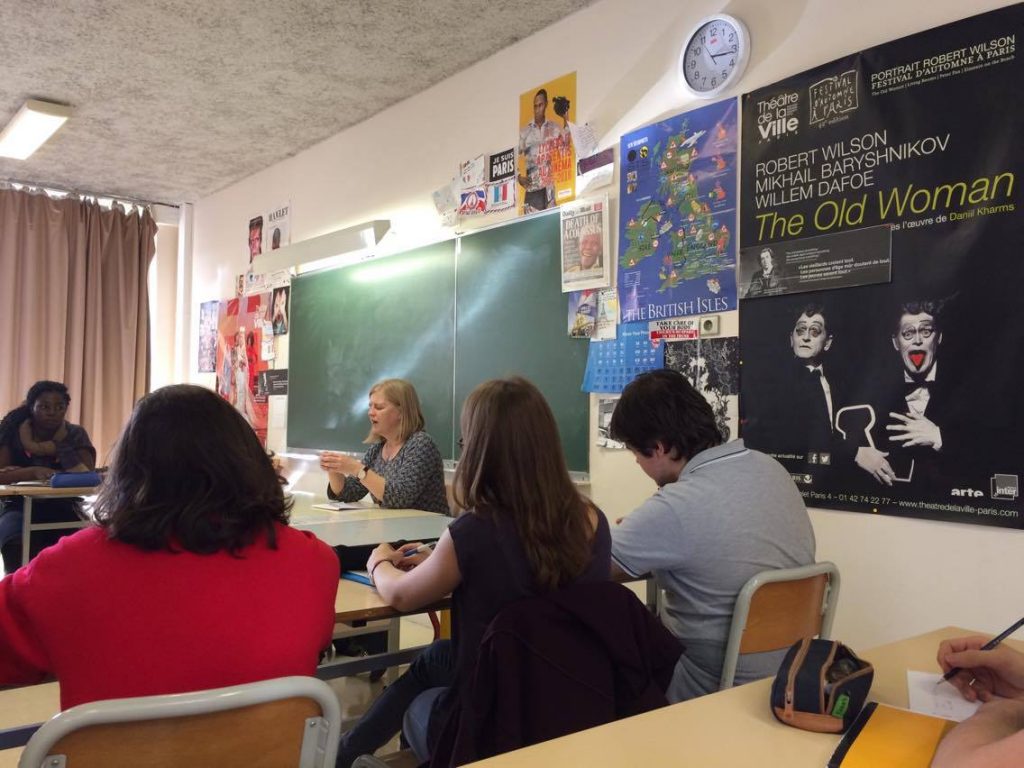In the courtyard of Paris’s Lycée Sophie Germain, where I met with some wonderful sixth formers last week to talk about my writing, there is a small but very beautiful bust of Germain, who was a mathematics prodigy and scholar and in her own way a revolutionary. The difficulties she experienced in being accepted as a mathematician lasted the whole of her life, and did not end even with her death. I first got to know about Sophie Germain through Judith French’s play A Spinster of No Profession, broadcast on Radio 4 in 1998. She has been a hero of mine ever since. ‘Spinster of no profession’ is what was recorded on Germain’s death certificate, in the space for ‘metier’.
The little blue book was rattling around in my purse. I took it out and turned to the last thing he had said (‘You stupid broad’, et cetera). Underneath was written Girl backs down – cries – manhood vindicated. Under ‘Real Fight With Girl’ was written Don’t hurt (except whores). I took out my own pink book, for we all carry them, and turning to the instructions under ‘Brutality’ found:
Man’s bad temper is the woman’s fault. It is also the woman’s responsibility to patch things up afterwards.
There were sub-rubrics, one (reinforcing) under ‘Management’ and one (exceptional) under ‘Martyrdom’. Everything in my book begins with an M.
They do fit together so well, you know. I said to Janet:
“I don’t think you’re going to be happy here.”
“Throw them both away, love,” she answered.
(The Female Man, Joanna Russ 1975)
It’s weird. There seems to be a fair amount of commentary on Russ that would seek to portray this, her most well known novel as brilliant in its way yes, but still a bit of a seventies throwback. Encountering it this week – belatedly and for the first time – I don’t find it has dated at all. The slang is dated, sure, so is the fashion, but so what? The novel The Female Man reminds me of most – not in terms of form or writing style (though even here there is some kinship) but in terms of affect – is Paul Beatty’s The Sellout, published just last year. I have still to decide if this counts as empowering or depressing.
The Female Man is a blistering polemic. Like The Sellout, it is very funny, the point being that it shouldn’t be, that readers should be asking themselves exactly why they are laughing. It is also a masterpiece of postmodern fiction, and should be taught and talked about as such, rather than constantly being siphoned off into ‘1970s Feminist SF’ where it can be conveniently sidelined as a niche interest.
Russ has been by my side constantly this week. In the gobsmacking halls of the Musée d’Orsay, where one is surrounded by women, most of them naked, but where the masterpieces on display do not include even a single work by a female artist.
At the secluded and elegantly shimmering Villa des Brillants in Meudon, where you can see a number of Rodin’s sculptures in the place where they were created and where I thought mostly about Gwen John, who lived in Meudon for thirty years, creating an art that forms one of the most remarkable bodies of work of the pre-war era.
John died in desperate poverty and virtually unknown.
I was hoping to be able to visit the street where Gwen John lived, but for all its acres of coverage of Rodin, Google remains tacit on the subject.
